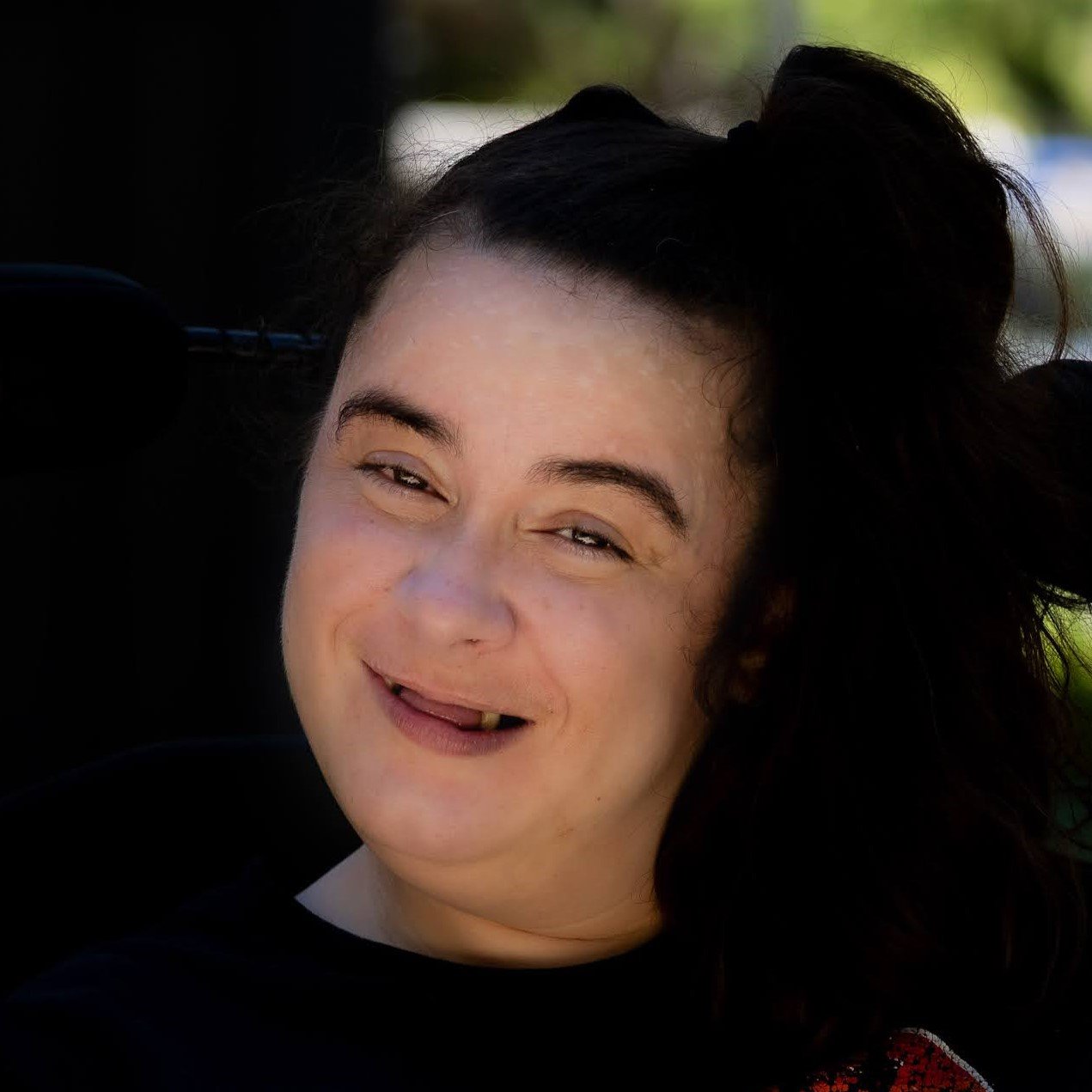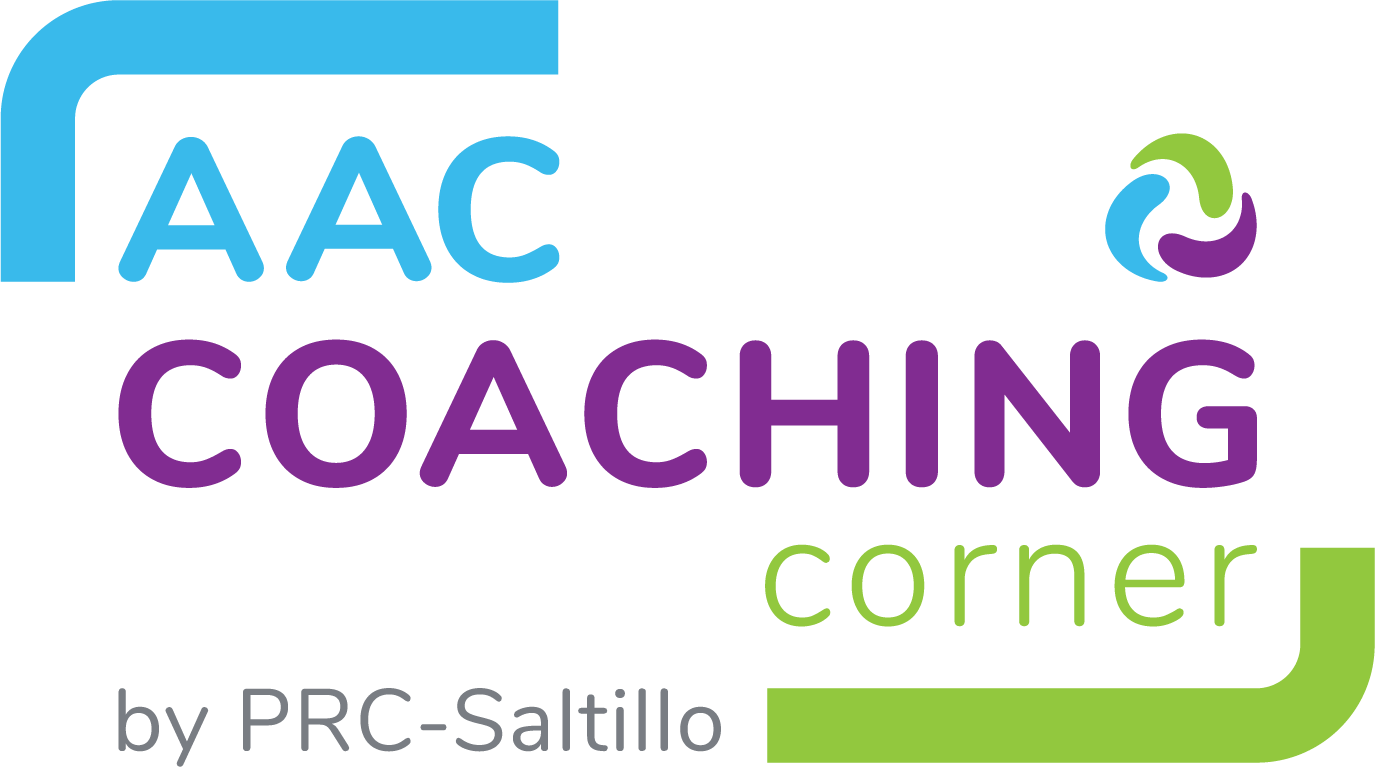
by Stephanie Fassov, PRC-Saltillo Ambassador
Welcome!
Hi there! I want to start with a question for you.
When you think about being independent, knowing who you are, or feeling close to other people—how important is communication?
If you use AAC (that means Augmentative and Alternative Communication), you probably know the answer: communication is super important.
But here’s the cool thing—communication isn’t just about asking for food or help. It’s also about:
- Sharing your thoughts
- Showing your personality
- Telling your stories
- Making friends and connections
Imagine this: You’re at a party. Someone tells a silly joke. You use your device to tell your own joke. Everyone laughs. That moment isn’t just about being funny. It’s about people seeing you.
This blog series is made for you. Together, we’ll look at how AAC connects to who you are, your friendships, and your feelings. We’ll also think about how people around you: teachers, family, and friends, can support you even better.
About Me
Hi, I’m Stephanie!
I want to share with you all about my AAC needs and multiple disabilities. I communicate on my Accent 1000 with Unity 144 Sequenced since I have quadriplegic dyskinetic (both athetoid and dystonic) cerebral palsy, which makes it hard for my body to move the way I want. I also live with Ehlers-Danlos Syndrome, bipolar disorder, and complex PTSD.
My Accent helps me share what I need to say and live according to what’s important to me, such as contributing to my family and society, and connecting in my interdependent relationships with family, friends, my personal care support staff, God, my clients, and even myself.
If it weren’t my Accent, I wouldn’t be able to live my value-based life, and it would take away my opportunity to contribute to my family and society at large and connect in my interdependent relationships. Not being able to contribute and to be interdependent in these relationships would trigger my complex PTSD and Bipolar symptoms, causing me to have anxiety and depression.
Professionally, I studied Communication Studies at San José State University, where I earned my bachelor’s and master’s degrees.
For my master’s project, I wanted to learn about individuals who use AAC and face significant physical challenges. My main question was: How does communication affect independence, choices, and identity?
My Journey
For many years, I have worked with and helped people who have different communication and support needs.
- For 10 years, I helped in classrooms with students who had complex needs.
- Later, I became a Court-Appointed Special Advocate. That means I supported a teenager with significant developmental differences and made sure his school rights were protected.
- I also joined a research group at UC Davis. We worked on making healthcare more welcoming for people with disabilities.
Picture this: You’re in a classroom where some kids speak, some sign, and some use AAC. Everyone’s voice is valued. That’s the kind of space I want to help create.
Becoming a Coach
Right now, I’m training to become three kinds of coach:
- Transformational life coach
- Mindfulness coach
- Mental wellness coach
My goal is simple: to help people live a life that matches their values, stay present in the moment, and break free from unhelpful thoughts.
I also work as a peer counselor. That means I walk alongside people and support them in different parts of life—social, emotional, mental, physical, and even spiritual.
Imagine this: You feel stuck because someone told you, “That’s too hard.” Together, we could look at what’s already working and find steps that help you feel proud and strong.
How I Support
When I coach or counsel, I focus on your strengths. Instead of just looking at problems, I ask: What’s already working? How can we grow that?
Here are some of the tools I use:
- Solution-Focused Brief Therapy: noticing what’s going well and building on it.
- Narrative Therapy: seeing your story as one of strength and hope.
- Person-Centered Therapy: You lead. I listen with care.
- Emotion-Focused Therapy: exploring feelings and learning from them.
- Existential Therapy: finding meaning in life.
- DBT (Dialectical Behavior Therapy): calming your mind, handling big feelings, and building strong friendships.
- ACT (Acceptance and Commitment Therapy): noticing unhelpful thoughts and moving toward what matters most.
- Relational-Cultural Therapy: growing through connection and support.
Picture this: You tell a story about a hard day. Instead of someone brushing it off, they listen and remind you how strong you are. That’s what these tools are for: helping you see your own power.
Supporting You and the AAC Community
I started a program called AAC Peer Support: Empowering Individuals to Find Their Voice. Currently, I mentor two teenagers on Zoom. One of them is an ambassador themselves.
We use something called Self-Determination Theory (SDT). It says people need three things to thrive:
- Autonomy: having choices and control.
- Competence: feeling capable and confident.
- Connection: having supportive relationships.
Imagine this: At lunch, you pick what you want to eat (autonomy). You show your friend a new game (competence). You both laugh (connection).
I also:
- Lead worship for Chris Klein’s Bible study, called Device Verses, for people who communicate on AAC.
- Volunteer with ImpAACt Voices, a nonprofit led by people who use AAC. Together, we plan events that give space for connection, empowerment, and real voices.
The Blog Series
This blog series will share stories and ideas from my research, my work, and my time in the AAC community.
Here’s a sneak peek:
- Blog 1: Autonomy and AAC
Imagine: You’re in class. You want to answer a question. AAC gives you the time you need to share your answer. That builds confidence. - Blog 2: Identity and Expression
Picture: You tell a joke, share your favorite color, or say how you’re feeling. That’s your identity - Blog 3: Connection During Holidays
Imagine: At a holiday dinner, everyone shares what they’re thankful for. With AAC, your words matter too. - Blog 4: Relationships and Empathy
Picture: Friendships grow when people listen, respect, and care. AAC helps you express those things. - Blog 5: Finding Your Own Voice
Imagine: Someone says, “You should like this.” But with AAC, you speak up about what you
Closing Thoughts
Thanks for spending this time with me.
AAC is not just about asking for things. It’s about:
- Who you are
- What you love
- What you believe
- How you connect with others
My hope is that these blog posts help you feel seen, supported, and encouraged as you use your voice. I also hope the people around you—teachers, family, and friends—learn how to walk with you in ways that honor your independence, your identity, and your connections.
Quick Glossary
AAC: Tools like devices, boards, or apps that help you share your words.
Self-Determination Theory (SDT): Three big needs—choice, confidence, and connection.
DBT: Skills for calming down and handling big feelings.
ACT: Letting unhelpful thoughts float by like balloons and moving toward what matters.
RCT (Relational-Cultural Therapy): Grows best when supported in relationships.
Now I want to hear from you—what’s one way AAC helps you feel more you?
There are no comments yet. Be the first to post!You must be logged in to post.
Communicators In Action - mental health, stephanie, finding voice














